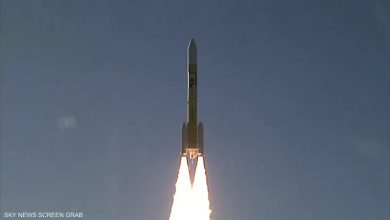What Is the Nikkei 225 Index and How Can You Trade It? IG International
On the other hand, the index has been performing reasonably well since late 2012, where it was priced in the region of 8,00 points. As we will discuss below, the most-established of these indexes is the Nikkei 225. The Japan 225 index is reviewed once a year at the beginning of October, and is calculated in real-time with updates every 15 seconds. Our mission is to empower readers with the most factual and reliable financial information possible to help them make informed decisions for their individual needs. Our goal is to deliver the most understandable and comprehensive explanations of financial topics using simple writing complemented by helpful graphics and animation videos.
- The historical performance of the Japanese stock exchange and thus, the Nikkei 225 index, is potentially one of the most interesting talking points with respect to major indexes.
- The selection criteria are based on the price of a company’s stock rather than market capitalisation, like with some other indices.
- This reduces the number of transactions being made and allows traders to capitalize on short-term market trends.
- The articles and research support materials available on this site are educational and are not intended to be investment or tax advice.
These funds won’t mirror the Nikkei price directly, and instead will be linked to the ETF’s net asset value. When you purchase an ETF, the process works in a very similar way to that of a conventional equity. The reason for this is that the market value of the Nikkei 225 ETF will rise and fall throughout the day. Moreover, you can then sell your ETF on the open marketplace, just like you would with a company stock. Before the economic downturn came to fruition, in 1989 the Nikkei peaked at 38,916 points.
Hey, Did We Answer Your Financial Question?
The Nikkei 225 is a popular market to trade because of its deep liquidity and low spreads. You’re also able to get exposure to an entire economy or sector with just a single position. As such, you will need to use a third party institution that tracks the Nikkei 225 index themselves.
In fact, at the time of writing in March 2019, the Nikkei 225 index is positioned at just over 21,500 points. Moreover, the highest record the Nikkei 225 index has been able to set since its 1989 heights was the 24,270 points it hit in December 2018. This will include an overview of the Tokyo Luno exchange review Stock Exchange itself, as well as a discussion on how an index works. Moreover, we’ll also explore what types of companies make the Nikkei 225 Index, and how the index is calculated. Take self-paced courses to master the fundamentals of finance and connect with like-minded individuals.
Stocks NIKKEI 225
TOPIX, on the other hand, uses the capitalization-weighted method for all the stocks in the TSE’s first section. TOPIX is affected by stocks with large market valuations, such as financials. The bubble burst in 1990 and the value of the Nikkei Index fell by one-third that year. It subsequently tickmill review rebounded between June 2012 and June 2015 with the help of economic stimulus from the Japanese government and the Bank of Japan, but the index was still nearly 50% below the 1989 high. It’s calculated based on the value of the 225 most-liquid stocks of the Tokyo Stock Exchange.
Unlike many other indices that are market-capitalization-weighted, the Nikkei is price-weighted, giving greater influence to higher-priced stocks. However, risks include exposure to the Japanese economy’s unique challenges, including its aging population and high public debt levels. Additionally, because of the price-weighted nature of the Nikkei, it can be more volatile than other indices. The Nikkei, like all major indices, is also influenced by global economic events. The global financial crisis of 2008 caused a sharp fall in the Nikkei, reflecting the severe economic downturn that followed. The performance of the Nikkei has often diverged from other major global indices.
Therefore, you should keep an eye on the dynamics of the S&P 500 and the Dollar Index, as well as other US indicators. Nikkei 225 was first introduced on the 9th of July, 1950, and administered by the Tokyo Stock Exchange. However, in 1970, the Nikkei financial newspaper – Nihon Keizai Shimbun, took over the index’s administration. Shannon Terrell is a lead writer and spokesperson at NerdWallet and a former editor at Finder, specializing in personal finance. Her writing and analysis on investing and banking has been featured in Bloomberg, Global News, Yahoo Finance, GoBankingRates and Black Enterprise. She holds a bachelor’s degree in communications and English literature from the University of Toronto Mississauga.
As the name suggests, Nikkei 225 comprises 225 of the largest and most liquid companies listed on the Tokyo Stock Exchange. It is a price-weighted index, meaning that the stock prices of the constituent companies determine their influence on the index. A price-weighted index assigns weight to each component company based on its stock price. This means that companies with higher stock prices have a more significant influence on the index’s value, regardless of their total market capitalization.
Which of these is most important for your financial advisor to have?
For example, during the 1980s, while other major indices saw moderate growth, the Nikkei surged due to the asset price bubble. Often referred to as the “Japanese Dow Jones,” the Nikkei 225 is considered the leading benchmark for the Japanese stock market. It is widely followed by investors and financial professionals itrader review to gauge the performance of the Japanese economy. With 500 companies from different sectors, Nikkei 500 offers a more diversified view of the Japanese market. It includes not only the major industries but also smaller sectors, providing a more accurate representation of the overall economy.
The index fund will most commonly replicate the performance of the Nikkei 225 by actually purchasing the underlying shares of the companies that make the index. As noted above, this would be a complex task for an individual investor to perform independently, however institutions have the required framework to do this. The Nikkei 225 is the Japanese stock market index that features the most prominent businesses in the Japanese economy. In this piece, we explore what the Nikkei 225 represents, its history, the companies that constitute the index, and how to approach trading it.
ETFs that track the Nikkei and trade on the Tokyo Stock Exchange include Blackrock’s iShares Nikkei 225 and Nomura Asset Management Nikkei 225 Exchange Traded Fund. The MAXIS Nikkei 225 Index ETF is a dollar-denominated fund that trades on the New York Stock Exchange. Initially, the TSE was founded as a marketplace for the exchange of bonds the government had issued to samurai. In addition to government bonds, the TSE also acted as an exchange for gold and silver currencies. The value of an investment in stocks and shares can fall as well as rise, so you may get back less than you invested. The Nikkei 225 has gained popularity among CFD traders due to its good volume and volatility.
Stay on top of upcoming market-moving events with our customisable economic calendar. Discover why so many clients choose us, and what makes us a world-leading provider of CFDs. Discover the range of markets and learn how they work – with IG Academy’s online course. You should also recognize that the official Nikkei 225 tracking index cannot be invested into per-say. This is because the index itself is there for tracking purposes only, rather than acting as a direct financial instrument. In other words, those involved in the Nikkei 225 investment space back in the mid-to-late 1980s would have no doubt been hit hard by the crash.


